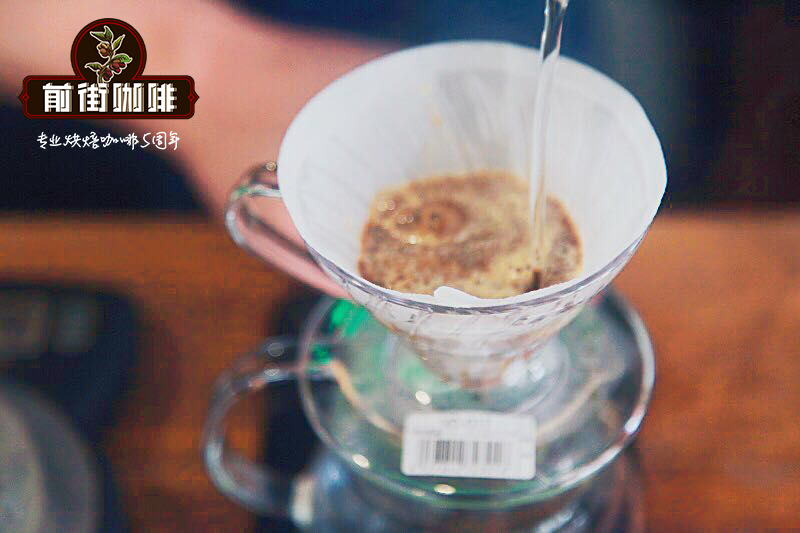Red Wine treatment Coffee treated with refined Red Wine Honey at Hartmann Manor in Panama

Professional coffee knowledge exchange more coffee bean information please follow the coffee workshop (Wechat official account cafe_style)
Friends who have come into contact with coffee must have heard: washing. In the sun. Wet planing. Honey treatment, and honey treatment is divided into white honey. Huang Mi. Red honey. Black honey. Wait.
Is there another way to treat red wine with the latest technology? Red wine treatment: is red wine added when processing? So advanced?
Ha ha! Definitely not to join the red wine, but just borrowed the red wine processing process!
The red wine treatment method refers to the fermentation process of wine treatment, puts the coffee fruit in a sealed metal container for anaerobic fermentation, and purposefully controls the PH value in the fermentation process, the type and number of bacteria involved in the fermentation and other factors to create the flavor in the cup. This
Control the fermentation process and name it "red wine treatment".
The main feature of red wine treatment is that it controls the fermentation process. If it is named "red wine treatment", then the winey treatment in Panama and Guatemala in the last two years should be called "red wine flavor treatment".
The origin of the name of "red wine treatment" comes from its treatment process, and the origin of the name of "red wine flavor treatment" is from its treatment results: (full alcohol thickness, red wine fermentation flavor, low acidity and excellent sweetness)
In the process of coffee fruit to raw coffee bean treatment, there will be more or less "fermentation", whether it is washing treatment, honey treatment, or sun treatment will undergo this chemical change process.
Refined Red Wine Honey Coffee at Hartmann Manor in Panama
Origin: Boquete, Panama
Bean seed: Caturra
Processing plant: Hartmann
Altitude: 1450-2000 meters
Handling method: Winy
Flavor: ripe berries, red wine fermented aroma, honey sweet
Winy for Red Wine treatment of Coffee beans
It can also be called red wine treatment, which is inspired by the brewing technology of red wine. At present, only eight estates in Colombia have successfully introduced coffee beans treated with this method to the market. According to the data of these eight estates, we can roughly divide the types of red wine treatment into: acetic acid fermentation (Aerobic aerobic fermentation), lactic acid fermentation (Anaerobuic anaerobic fermentation), mixed fermentation (Mix Fermentation=Aerobic+Anaerobuic).
The traditional treatment method is difficult to control the changeable fermentation degree of coffee beans. But red wine treatment rules can ensure the quality of coffee beans by controlling PH value, even temperature and humidity, and airtight fermentation makes aroma less volatile.
Next, let's talk about the specific process of fermentation. First of all, Colombian farmers carefully pick coffee cherries and carefully select coffee red fruits to ensure that among the coffee cherries selected for processing, the percentage of immature cherries is less than 2%, defective beans less than 3%, and floating beans less than 5%.
The selected coffee cherries are placed in a specific container by the farmer's uncle, which should have a device similar to a red wine fermentation suppository or a single exhaust valve. In this way, carbon dioxide can be spilled through the device to control the concentration of air in the container. At this time, the coffee cherries in the container are fermented with acetic acid, and the beans are relatively bright, clean and citric acid.
According to Sasa's description in the competition, the processor injected carbon dioxide into the container to prevent oxidation from producing volatile acid, a process known as lactic acid fermentation, which produces malic acid and stone acid, which is relatively stable, so the beans fermented with lactic acid have a more mellow acidity, with cheese, nutty and creamy flavor.
END
Important Notice :
前街咖啡 FrontStreet Coffee has moved to new addredd:
FrontStreet Coffee Address: 315,Donghua East Road,GuangZhou
Tel:020 38364473
- Prev

Description of the flavor of coffee from La Tisa Manor in Guatemala and introduction to the manor
La Tisa country: Guatemala Grade: SHB production area: Fraijanes,Guatemala City altitude: 1675 m Harvest time: October to February treatment: washing varieties: bourbon, Kaddura treatment Plant: Latitha Manor Flavor: black tea, floral, rich caramel Farahan (Fraijanes) production area revolves around Guatemala City, the capital
- Next

Nicaragua COE champion Santa Adelaida Garden Water washing Pacamara Flavor Origin introduction
Professional coffee knowledge exchange more coffee bean information please follow the coffee workshop (Wechat official account cafe_style) 2015 Nicaraguan COE champion Santa Adelaida Manor Pacamara / Elephant bean washing lot 65 (Nicaragua Santa Adelaida Pacamara/Maragogype Washed Lot.65) flavor description: dry aromas of BlackBerry, black plum and citrus.
Related
- Detailed explanation of Jadeite planting Land in Panamanian Jadeite Manor introduction to the grading system of Jadeite competitive bidding, Red bid, Green bid and Rose Summer
- Story of Coffee planting in Brenka region of Costa Rica Stonehenge Manor anaerobic heavy honey treatment of flavor mouth
- What's on the barrel of Blue Mountain Coffee beans?
- Can American coffee also pull flowers? How to use hot American style to pull out a good-looking pattern?
- Can you make a cold extract with coffee beans? What is the right proportion for cold-extracted coffee formula?
- Indonesian PWN Gold Mandrine Coffee Origin Features Flavor How to Chong? Mandolin coffee is American.
- A brief introduction to the flavor characteristics of Brazilian yellow bourbon coffee beans
- What is the effect of different water quality on the flavor of cold-extracted coffee? What kind of water is best for brewing coffee?
- Why do you think of Rose Summer whenever you mention Panamanian coffee?
- Introduction to the characteristics of authentic blue mountain coffee bean producing areas? What is the CIB Coffee Authority in Jamaica?

